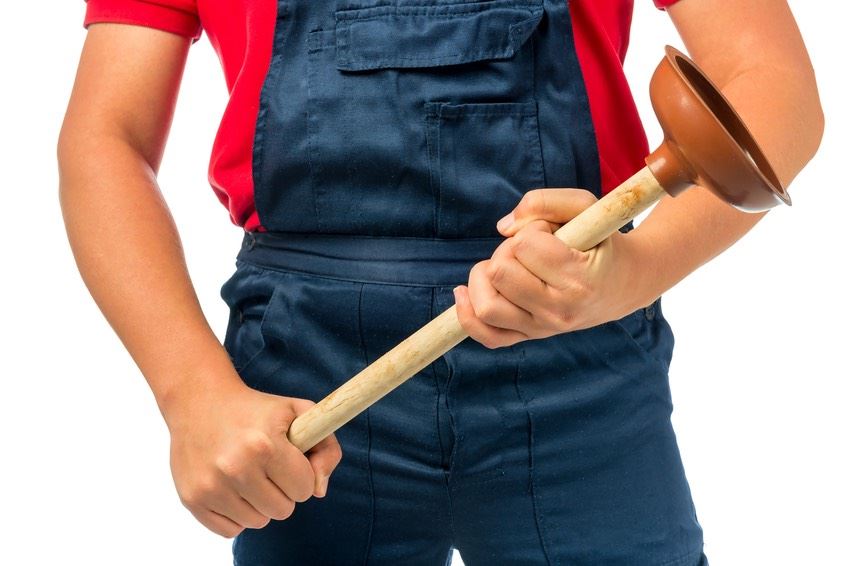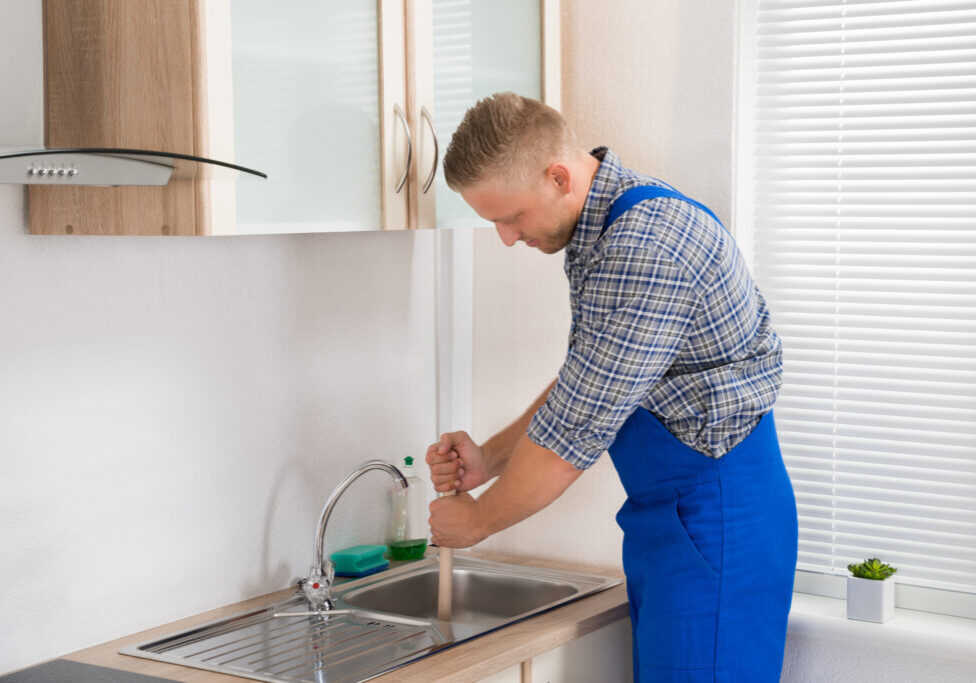The author is making a number of good annotation on Tips on How to Effectively Use a Plunger overall in this content following next.

Introduction
Correct maintenance of home drains is vital for avoiding obstructions and guaranteeing smooth water flow. Among the secret tools in every property owner's toolkit is the plunger, together with different drainpipe cleaners developed to take on stubborn blockages successfully. This article explores how to utilize plungers and drainpipe cleaners properly to maintain your drains pipes streaming openly.
Area 1: Comprehending Bettors
Sorts of Plungers
There are numerous sorts of bettors readily available, each created for various types of drains pipes and obstructs. One of the most usual types include cup plungers, flange bettors, and accordion plungers.
Exactly How Plungers Job
Bettors service the concept of developing stress and suction to displace clogs. When effectively used over a drainpipe, they create a vacuum that can take out particles or break up obstructions.
Picking the Right Bettor
Picking the right bettor relies on the kind of drain and the nature of the obstruction. Mug plungers are excellent for sinks and bathtubs, while flange plungers are better matched for commodes due to their design.
Typical Blunders with Bettors
Avoiding these errors ensures efficient plunging: incorrect seal around the drainpipe, insufficient pressure, and unclear surrounding debris.
Section 2: Using Plungers Efficiently
Preparation
Before diving, ensure the plunger covers the drainpipe completely and creates a tight seal. Clear any type of visible debris around the drainpipe opening.
Technique
Beginning with gentle plunging activities to build suction. Boost stress gradually, utilizing a steady rhythm. Repeat as required up until the drainpipe clears.
Troubleshooting Tips
If plunging doesn't function, attempt readjusting the seal, applying petroleum jelly for a much better seal, or utilizing a different sort of plunger.
Area 3: Recognizing Drain Cleaners
Sorts Of Drainpipe Cleaning Company
Drain pipes cleansers can be chemical or enzymatic. Chemical cleaners use strong chemicals to dissolve blockages, while enzymatic cleansers use natural enzymes to break down raw material.
Exactly How Drainpipe Cleaners Job
Chemical cleansers react with blockages to dissolve them, while enzymatic cleansers break down organic products like hair and grease without hurting pipes.
Safety and security Factors to consider
Always use handwear covers and eye protection when making use of chemical drain cleaners. Guarantee ample air flow and comply with maker instructions very carefully.
Eco-Friendly Alternatives
Think about using vinegar and cooking soda or enzyme-based cleansers for green options that are much safer for pipes and the atmosphere.
Area 4: Using Drain Cleansers Effectively
Application Techniques
Pour chemical cleaners directly right into the drain opening. Permit them to work for the recommended time before flushing with warm water. Chemical cleaners ought to sit overnight.
Precautions
Stay clear of mixing various sorts of cleansers, as this can create toxic fumes. Never utilize chemical cleaners in conjunction with a plunger, as spilling can take place.
Dealing With Stubborn Clogs
For persistent clogs, take into consideration utilizing a pipes serpent or calling a professional plumbing professional to avoid damage to pipelines.
Final thought
To conclude, recognizing exactly how to utilize bettors and drain cleaners effectively is necessary for maintaining healthy and balanced plumbing systems. By selecting the right tools and methods, property owners can deal with minor obstructions and protect against significant pipes issues down the line.
4 DIY Ways to Unclog Drains
Wire Hanger
This age-old technique has been used by many an amateur plumber – to much success. Take any wire hanger, deconstruct its shape and leave a small hook shape on the end. Time to go fishing! Remove the shower or sink drain cover and snake the wire into the drain, wiggling and rotating it as you push it through. Dispose of the gunk that you remove and flush the drain with hot water. Rinse with a pan of boiling water for best results.
Plunger
Creating a suction in your drain can break up clogs caused by hair and soap residue build up. First, make sure you are using the correct type of plunger, one specifically for sinks or tubs. They are typically smaller than regular toilet plungers and often have a shallow suction cup. Regular plungers can work too but we’d recommend cleaning them first and finding a way to create better suction over the drain.
Baking Soda and Vinegar
This technique is a classic – and one of the most popular DIY drain unclog methods. Pour one cup of baking soda and one cup of vinegar down the drain and allow it to work its magic overnight. The next morning, flush the drain with boiling water. Repeat if necessary.
Drain Snake/Hair Clog Tool
If you know your clog is caused primary by hair, a drain snake/hair clog tool might be your best option. These tools can be purchased for under $10 at any hardware store and work well so long as the clog isn’t too deep in the drain.
https://www.callcatons.com/blog/four-diy-ways-to-unclog-drains/

Application Techniques
Pour chemical cleaners directly right into the drain opening. Permit them to work for the recommended time before flushing with warm water. Chemical cleaners ought to sit overnight.
Precautions
Stay clear of mixing various sorts of cleansers, as this can create toxic fumes. Never utilize chemical cleaners in conjunction with a plunger, as spilling can take place.
Dealing With Stubborn Clogs
For persistent clogs, take into consideration utilizing a pipes serpent or calling a professional plumbing professional to avoid damage to pipelines.
Final thought
To conclude, recognizing exactly how to utilize bettors and drain cleaners effectively is necessary for maintaining healthy and balanced plumbing systems. By selecting the right tools and methods, property owners can deal with minor obstructions and protect against significant pipes issues down the line.
4 DIY Ways to Unclog Drains
Wire Hanger
This age-old technique has been used by many an amateur plumber – to much success. Take any wire hanger, deconstruct its shape and leave a small hook shape on the end. Time to go fishing! Remove the shower or sink drain cover and snake the wire into the drain, wiggling and rotating it as you push it through. Dispose of the gunk that you remove and flush the drain with hot water. Rinse with a pan of boiling water for best results.
Plunger
Creating a suction in your drain can break up clogs caused by hair and soap residue build up. First, make sure you are using the correct type of plunger, one specifically for sinks or tubs. They are typically smaller than regular toilet plungers and often have a shallow suction cup. Regular plungers can work too but we’d recommend cleaning them first and finding a way to create better suction over the drain.
Baking Soda and Vinegar
This technique is a classic – and one of the most popular DIY drain unclog methods. Pour one cup of baking soda and one cup of vinegar down the drain and allow it to work its magic overnight. The next morning, flush the drain with boiling water. Repeat if necessary.
Drain Snake/Hair Clog Tool
If you know your clog is caused primary by hair, a drain snake/hair clog tool might be your best option. These tools can be purchased for under $10 at any hardware store and work well so long as the clog isn’t too deep in the drain.
https://www.callcatons.com/blog/four-diy-ways-to-unclog-drains/

We were made aware of that editorial about How to Use a Plunger to Unclog a Toilet or Drain through an associate on another web property. Loved our content? Please share it. Help others find it. Thanks for your time. Please visit our blog back soon.
Book An Estimate Now